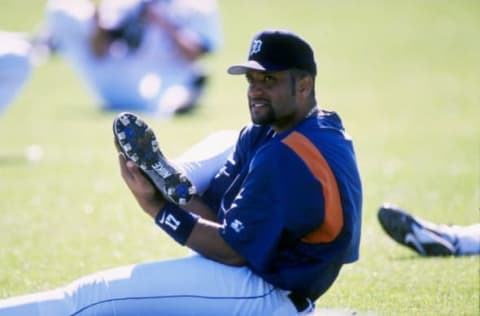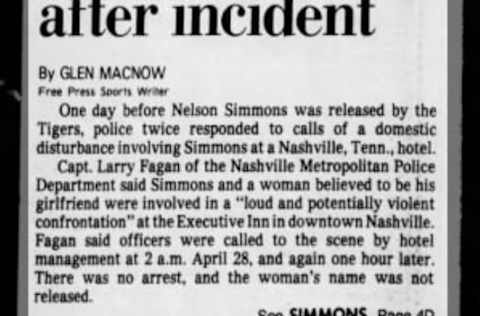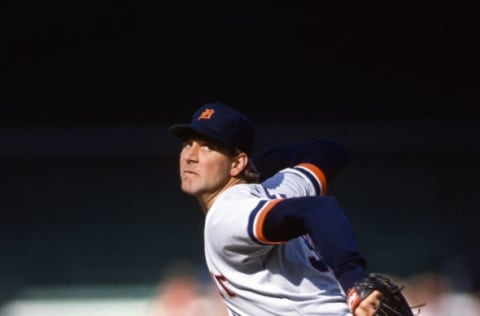Detroit Tigers: The 3 best September call-ups and moments

As today is September 1st, all MLB rosters expand to 28 players. We look back at a simpler time when rosters would expand to 40 players and what Detroit Tigers September call-ups and moments stand out.
The days of the Detroit Tigers dugout filled with players from their 40-man roster are gone. The September call-ups this year are Niko Goodrum and Wily Peralta coming back off the IL. So none of the future prospects will be seeing Detroit anytime soon since Riley Greene, Spencer Torkelson, and Ryan Kreidler are not currently on the 40-man roster however, that will change in the off-season.
What will be interesting with the recent changes in management, this 40-man roster may take a different look come the same time next year. Manager AJ Hinch and his staff have had time to figure out who they like and who fits their mold.
You can see based on the last few months the progression of pitchers, thanks to pitching coach Chris Fetter and the Director of Pitching Development, Dan Hubbs. Peralta was also added to the 40-man roster a few months back and has been a pleasant surprise to the rotation.
Even on the hitters’ side, guys like Eric Haase, who was not on the 40-man roster until May 10 when Grayson Greiner hit the IL. From there, the Tigers purchased his contract from Toledo and he never looked back.
During Detroit’s competitive windows between managers Jim Leyland and Sparky Anderson, looking around those rosters around the first of September brought out a few surprises that provided be impactful not only in the future but in one case, one assisted in a big moment that helped the Tigers go to the post-season.
Without further ado, let’s take a look at the players who made a strong debut in September in the stats department. For this exercise, we went back from 1960 to the present day.

Detroit Tigers 1B Tony Clark
After overcoming injuries and a basketball career, Tigers fans finally saw the debut of Tony Clark on September 3rd, 1995 at Tiger Stadium against Cleveland. This was the final season for Sparky Anderson so Clark represented in a way, the new guard for the upcoming changes to come in the organization just a few months later with new GM Randy Smith and a new manager at the helm with Buddy Bell.
Clark had a decent start to his career in terms of extra-base power, hitting three home runs with five doubles and putting up a slash line of .238/.294/.396 with an OPS of .690 (12-for-101).
1st baseman Mike Laga
It was a strange year for the Triple-A Evansville Triplets. Centerfielder Glenn Wilson and 3rd baseman Howard Johnson would get called up after Opening Night, which is good for your best prospects should get an opportunity but as how high Sparky was on HoJo, he was sent back down after 12 games in May before getting called up in August.
Left-handed pitcher Bruce Robbins, who spent two seasons with the Tigers in 1979 and 1980, retired in June suddenly. The Tigers and Evansville kept to themselves until it was reported on June 16.
Now, onto Laga. He would set a club record for most home runs in a season for Evansville, hitting 34. That was his second season in a row in which he had 30 or more home runs after hitting 31 in Double-A Birmingham in 1981.
He would debut on September 1st and in 27 games, hit .261 with three home runs and an OPS of .759. He was predicted to be the future left-handed cleanup hitter. But the former first-round draft pick (17th overall) in 1980, could never put any type of consistency and was later traded along with Ken Hill to the St. Louis Cardinals for Mike Heath on September 2nd, 1986. He and this next player had something in common.
Outfielder Nelson Simmons
Now in the cliff notes of Detroit Tigers history, Nelson Simmons was another prospect that represented the future. At 21 years old after hitting 22 home runs in Evansville, the sky was the limit.
He made his debut on September 4, 1984, and would not play again until September 19 when at that point, the Tigers pretty much had the division wrapped up. He and Laga were part of the Tigers “B” lineups that allowed Sparky Anderson to rest his regulars in the final weeks of the season. That night against the Brewers, he had three hits and would finish hitting .433 in nine games of action (13-for-30).
Despite a strong spring in 1986, the Tigers released the outfielder as Sparky Anderson was quoted as saying he had become muscle-bound and was no longer was able to get to high pitches. But there was more to than just his performance. He was cut for an incident that happened in a Nashville hotel.


Detroit Tigers Outfielder Willie Horton
Four-time All-Star and Tigers legend Willie Horton just spent two seasons in the minors before he was called up for the final 15 games of the 1963 season, making his debut on September 10th as a pinch hitter for the pitcher. He put an impressive slash line of .326/.326/.488 (14-for-43).
He would make the club in 1964 in an outfield platoon. After an early-season slump, he was sent to Triple-A Syracuse, where he came into form, showing off the power he would be known for and would get the call up for good that September. His impact has been forever felt not only as a baseball player but his work within the community.
Catcher Lance Parrish
The “Big Wheel” made his debut as a September call-up on September 5th, 1977 against the Baltimore Orioles in the first game of a doubleheader. After hitting 25 home runs and batting .279 for Triple-A Evansville, it would not be until his second game until Tigers fans would see the power on display.
In a rain makeup game, Parrish would go deep in the 6th inning off Earl Stephenson. He would also double off Stephenson and finish the day going 3-for-4 with 4 RBI. While he finished the month hitting just .192, he would be one of the centerpieces of the 1984 World Series team.

Outfielder Ron LeFlore
So LeFlore debuted as a rookie getting a second chance at life on August 1st, 1974 after the Tigers signed him in the summer of 1973. Granted, this should not call up as a September call up but allow me to explain why he belongs here anyways.
The Tigers took a chance on Leflore after he was paroled from Jackson State Prison in the summer of 1973. He was in prison for robbery and many older Tigers fans know the story of LeFlore. But what stands out about LeFlore is that he never played baseball until he was out of prison. After spending a year between Clinton in Low-A and then later in High-A with Lakeland, where he showed his speed with 42 stolen bases, he replaced the injured Mickey Stanley in the lineup.
His September numbers? .278/.306/.302 (35-for-126) with 12 stolen bases. Considering his slow start in August and being still relatively new to baseball, to have the September numbers that he did, a tip of the cap.
Infielder Jim Walewander
Before there was Donnie Kelly, there was Jim Walewander. He was one of the callups in September 1987 but already had spent time in Detroit earlier that season. Why was he so enduring to Tigers fans? He could play different positions and Sparky Anderson loved his work ethic. He saw a lot of himself in Walewander. He got the nod as one of five Mud Hens getting the call up on September 1st.
He didn’t play third at all for Toledo in 1987 until he got the call up to Detroit in May. He was critical down the stretch for the Tigers to capture the AL East title with his glove. Of course, there was his three-hit game against Baltimore on September 29th when the Tigers crushed the Orioles 10 to 1.
In researching Jim Walewander, I finally found out the origins behind the punk band The Dead Milkman’s appearance at Tiger Stadium. He gave him a tour of the stadium. He was a fan of them and the Replacements, which is one of my favorite bands of all time. No wonder why people like Walewander.

Detroit Tigers RHP Mike Henneman
So admittedly, September call-ups for pitchers were hard to come by in terms of impact. Henneman’s rookie season was one of the main reasons why Detroit was able to win the AL East in 1987. Despite his less than stellar September numbers in which he posted an ERA of 5.16 in 14 appearances, his July and August numbers were key for the Tigers as they headed into September. His July ERA was a 2.05 and in August, a 2.14 ERA.
A rookie season in which he finished 11-3 with an ERA of 2.98 in 96 innings of work? That is pretty impactful.
LHP Andrew Miller
After being drafted sixth overall in the 2006 MLB Draft, Miller quickly made his debut on August 30th in New York against the Yankees.
Miller stands out for two reasons as a September call-up to remember. One, he pitched the final outs of the Tigers winning 11-4 and heading to the post-season for the first time since 1987. Ask any fan who watched the Tigers in the ’90s. That moment when Miller got the final out at least to me put tears in my eye and ended years of frustration of watching bad baseball.
Miller’s quick rise to the majors made it possible for Dave Dombrowski to use him in a trade for Miguel Cabrera in the off-season of 2007.
LHP Drew Smyly
Smyly was critical to the Tigers’ World Series run in 2012 but his month of September was one of the best among Tigers rookie pitchers. In 13 games, mainly as a reliever and two as a starter, he pitched 13.2 innings, allowing just three runs on nine hits, striking out 8, and posted an ERA of 1.98.